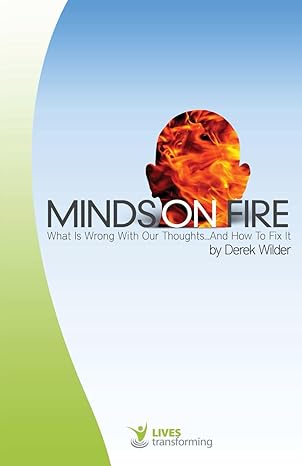The similarities between ancient Near Eastern texts and the Old Testament are palpable, which has spawned a multitude of cross-cultural and comparative studies. Based on the significant relational connections, some conclude that the Bible is one of many ancient myths, while others diminish or even eschew the notion of relevant relationships. The following essay describes the philosophical approach utilized for background studies in Old Testament exegetical and expositional contexts. Next, an analysis of how knowledge of ancient Near Eastern backstories informs a contextually cognizant reading of the Old Testament ensues, followed by an explanation of the degree to which readers should allow the ancient Near Eastern backgrounds to influence an understanding of the biblical text. Finally, based on the stated philosophy, three examples of ancient Near Eastern backstories that inform an interpretation of the Old Testament texts complete the essay.
Ancient Near Eastern Background: Philosophy
The philosophical approach used in this essay for background studies in Old Testament exegetical and expositional work builds upon the deployment of cognitive environment criticism that rests on certain vital presuppositions. By definition, cognitive environment criticism examines the intellectual milieu and cultural context of ancient writing to provide a deeper and more coherent understanding of the text. Four presuppositions underlie the philosophical approach. First, the philosophy presumes that the biblical writers had some access to ancient ideas and literature from other cultures. Although significantly different from today’s easy and immediate access to information, the ancient Israelites lived within a cultural river. Second, similar to the intertextual canonical connections used by Old Testament writers, the philosophy assumes these same writers utilized echoes, allusions, and, at times, quotes from ancient Near Eastern sources. Third, the philosophy presupposes dual authorship of the Old Testament through a joint effort of God and man, which provides a unity throughout the Old Testament canon. Fourth, the philosophy presumes that the Old Testament resides on a cognitive framework informed by an ancient cultural context.
With the presuppositions established, two fundamental axioms support the deployment of cognitive environment criticism. The first axiom is that one would expect significant similarities between the Old Testament and other ancient texts, including the overlap of concepts, ideas, and content.
Next, although similarities exist, the critical difference between the Old Testament and the pagan texts of the ancient Near East dwells at the more profound, structural level of worldview, which also informs the similarities. Specifically, and most importantly, as John Oswalt explains, ancient Near Eastern religious thought is built upon a mythological intellectual framework involving continuity, while the Old Testament writers’ cognitive framework builds upon the radically different concept of transcendence.[1] The framework of continuity aligns with the modern notion of pantheism or, more likely, panentheism, where all of reality, including humankind, divinity, and nature, exist without distinctions or barriers. The framework of transcendence assumes God lives outside humankind and nature as a transcendent Being. Accordingly, there is no reason to avoid utilizing background studies in Old Testament exegetical and expositional contexts as long as the four essential presuppositions remain intact, and the interpreter not only acknowledges the reasonableness of the similarities but also recognizes the radical difference within the intellectual framework between the ancient Near Eastern texts and the Old Testament.
Ancient Near Eastern Background: Context
How knowledge of ancient Near Eastern backstories informs a contextually cognizant reading of the Old Testament is fourfold. First, the stories of the ancient Near East may inform the reading of the Old Testament as literature. Juxtaposing pagan literature with the biblical account may enhance understanding of the texts’ literary structures, rhetorical devices, and genres. Second, the knowledge of ancient Near Eastern backstories may also inform religious praxis. By comparing the similarities and differences between the cultic and ritual activities of the Israelites with the rest of the ancient Near East, the interpreter may glean insights into the meaning of certain religious practices documented within the Old Testament. Third, comparing the sociopolitical events within the ancient Near East with the Old Testament texts may inform the societal concerns of the biblical writers. Fourth, identifying the similarities and differences between the theological perspectives of ancient Near Eastern religions and the Old Testament provides opportunities to recognize thematic threads and shared motifs that may illuminate the meaning of the biblical writers. As long as the critical worldview distinction between continuity and transcendence is maintained, cultural studies can inform and enhance a literary, cultic, societal, and theological understanding of the Old Testament texts, allowing the interpreter to walk students across a principlizing bridge for modern application.
Ancient Near Eastern Background: Influence
Although ancient Near Eastern background studies inform a literary, cultic, societal, and theological understanding of the Old Testament, the degree to which readers should allow background studies to influence their understanding of the biblical text remains controversial. From one extreme, an interpreter could determine that since significant similarities occur with ancient Near Eastern religions, the Old Testament must be another pagan myth. Alternatively, an interpreter could decide that, since the Old Testament is the inspired Word of God, any study of other pagan cultures would be sacrilegious. In general, a balanced approach that safeguards against these extremes assists in determining the degree to which readers should allow ancient Near Eastern backgrounds to influence meaning.
John Walton provides three categories of interpretive boundaries: similarities and differences, borrowing, and genre.[2] First, the interpreter must avoid focusing exclusively on either similarities or differences and consider both. Second, identifying the source of borrowing is a reasonable exercise as long as the interpreter recognizes the possibility that the meaning may have substantially morphed into its final form. Third, although the content may be similar, if the genres between the ancient Near Eastern text and the Old Testament text differ, the impact of similarities needs to be minimized. In general, overemphasizing the similarities or differences increases the risk of misinterpretation of the biblical texts.
Finally, without question, the priority of interpretation must land on the side of the Old Testament. In other words, if the study of ancient Near Eastern backgrounds undermines the unity of the Bible, the inspiration of the biblical text, or its overall thematic initiatives, the interpreter must reconsider the methodological approach. In sum, readers should allow ancient Near Eastern backgrounds to influence their understanding of the biblical text significantly, assuming the proper interpretive boundaries remain intact and the priority of interpretation remains with the biblical account.
Narrative Example: Genesis 1-2
The first example represents one of the most famous ancient Near Eastern backstories within comparative studies. The well-known Mesopotamian creation myth, the Enuma Elish, tells the story of a pantheon of gods birthed from watery chaos. Two gods, Apsu and Tiamat, give birth to other gods. Ultimately, the god Marduk kills Tiamat, splits the god into two separate parts and uses them to create heaven and earth. Several similarities exist between the Enuma Elish and the biblical creation account. John Currid observes that the order of the two creation accounts correlates; darkness pervades both accounts, and the creative process revolves around the concepts of light, dry land, man, and a period of rest.[3]
Based on the deployment of cognitive environment criticism to the Babylonian creation story, it is unnecessary to either embrace the similarities entirely or deny the distinctions. In other words, to suggest that the Genesis account is just another ancient creation myth misses the mark, but to deny any similarities between the biblical account and the Enuma Elish is academically naïve. Although the two accounts have numerous similarities, the cognitive environment is vastly different. As John Oswalt explains, the Enuma Elish is not actually about creation at all but about the emanation of world order from already-existent material that not only exalts Marduk but also promotes the continuous defeat of chaos.[4] Alternatively, a transcendent God performs creation in Genesis 1-2 by divine fiat and ex nihilo, which contradicts the Babylonian creation account and cognitive framework. Although similarities exist, cognitive environment criticism provides essential insights into the relationship between the two accounts.
Wisdom Example: Job 5:6-7
Job 5:17 is a less well-known example of an ancient Near Eastern backstory that informs the interpretation of Old Testament wisdom texts. An example of a typical English translation states, “For affliction does not come from dust, nor does trouble sprout from the ground, but man is born to trouble as sparks fly upward” (Job 5:6-7, English Standard Version). A more wooden translation of the final phrase “as sparks fly upward” is the “sons of Resheph (בני־רשף) grow tall to fly” (Job 5:7b). Certain scholars recognize that Resheph was the name of a Phoenician god of plague and pestilence equated with the Mesopotamian god Nergal, whom people in the ancient Near East worshipped and feared.[5] In other words, Job’s friend, Eliphaz, suggests that when Job sins or creates trouble for himself, it is like turning the ancient demons of pestilence loose to fly around the earth and attack.
When deploying cognitive environment criticism to ancient Near Eastern echoes, allusions, and quotes, it is essential to neither assume that the Bible is a myth that aligns with the ancient Near Eastern understanding of Resheph nor assume that the potential allusion to Resheph cannot exist, and, accordingly, the translation must refer to sparks from fire. Instead, the interpreter needs to consider the phrase’s meaning in light of the distinctive worldviews of pagan mythology and the Old Testament. Within the larger context of the book of Job, it is understandable why Eliphaz may have alluded to Resheph, a capricious god that terrorizes humans. Eliphaz the Temanite’s worldview aligns with ancient Near Eastern thinking: the righteous must always be rewarded, and the wicked must always be punished. Accordingly, Job’s suffering must be caused by the gods’ punishment for doing wrong. The consequence of Eliphaz’s thinking is that Yahweh, like Resheph, can be controlled and manipulated by the actions of humans, which aligns with the worldview of continuity.[6] By recognizing Eliphaz’s ancient Near Eastern cognitive framework, the interpreter can not only see why Eliphaz is incorrectly highlighting similarities between Resheph and Yahweh but, more importantly, how the overarching message of the book of Job highlights the differences between the two deities. Yahweh is a transcendent God who is not only in complete control of the world but cannot be manipulated by human action. Ultimately, unlike the capricious and manipulatable gods of the ancient Near East, such as Resheph, Yahweh asks Job to trust Him within a worldview where a transcendent God is trustworthy to control the universe.
Prophetic Example: Isaiah 51:9-10
An example of an ancient Near Eastern backstory that informs the interpretation of an Old Testament prophetic text can be found in Isaiah 51:9-10, which states, “Awake, awake, put on strength, o arm of the Lord; awake, as in days of old, the generations of long ago. Was it not you who cut Rahab in pieces, who pierced the dragon? Was it not you who dried up the sea, the waters of the great deep, who made the depths of the sea a way for the redeemed to pass over?” In this passage, the biblical writer utilizes ancient Near Eastern myths to form his polemic. A familiar story in the ancient Near Eastern cognitive environment was that order was brought into the world through overthrowing the chaos monster. The name of the chaos monster varied. According to John Oswalt, the monster’s name was Leviathan in Canaanite literature, Tiamat in Mesopotamian literature, and Nun in Egyptian literature.[7] However, the passage in Isaiah utilizes the language of myth for literary purposes rather than mythical purposes.
When deploying cognitive environment criticism to ancient Near Eastern comparisons with Scripture, it is imperative to avoid the extremes. On the one hand, Isaiah is not suggesting that the Bible is a mythological story like the Canaanite stories of the chaos monster. On the other hand, it goes too far to suggest that Isaiah was using a literary device with no reference to the ancient Near Eastern cultural milieu. Instead, unlike ancient Near Eastern thought, the chaos monster is no threat to Yahweh. Furthermore, no struggle between Yahweh and the chaos monster that would bring order to the universe is in sight. Instead, Isaiah references the famous story of the Exodus, where Yahweh parted the sea to redeem His people. In contrast to the worldview of continuity, the transcendent God, Yahweh, conquers evil at given points in history rather than through a continuous struggle with a chaos monster in the primeval realm.[8] Although a reference to ancient mythology occurs within the passage, the biblical writer uses the allusion to highlight the distinction between Yahweh and the ancient Near Eastern gods rather than assimilating the Israelite worldview into mythology.
Conclusion
The philosophical approach towards background studies in Old Testament exegetical and expositional work is built upon utilizing cognitive environment criticism. The approach expects similarities between the Old Testament and ancient Near Eastern texts due to the shared cultures of the people groups but also recognizes critical differences between the texts that occur at the more profound, structural level of worldview. Specifically, the ancient Near Eastern religions are located within a cognitive framework of panentheistic continuity, while the Israelite religion is located within a cognitive framework of transcendence. In light of this approach, cultural studies can inform and enhance a literary, cultic, societal, and theological understanding of the Old Testament texts. Furthermore, readers should allow ancient Near Eastern backgrounds to influence their understanding of the biblical text significantly, assuming proper interpretive boundaries are maintained, and the priority of interpretation remains with Scripture. Finally, in each of the biblical examples explored, the quotes, allusions, and echoes utilized by the biblical writers not only presented similarities between the Old Testament and the ancient Near Eastern texts but also provided examples that, when placed within the broader cognitive environment, highlight Israel’s unique understanding of a transcendent God.
_____________________________________
[1] John N. Oswalt, The Bible among the Myths: Unique Revelation or Just Ancient Literature? (Grand Rapids: Zondervan Academic, 2009), 47–84.
[2] John H. Walton, “Cultural Background of the Old Testament,” in Foundations For Biblical Interpretation, ed. David S. Dockery, Kenneth A. Matthews, and Robert B. Sloan (Nashville: Broadman & Holman, 1994), 256.
[3] John D. Currid, Against the Gods: The Polemical Theology of the Old Testament (Wheaton: Crossway, 2013), 37.
[4] Oswalt, The Bible among the Myths, 101.
[5] See Robert Fyall, Now My Eyes Have Seen You: Images of Creation and Evil in the Book of Job (Downers Grove: IVP Academic, 2002), 118 and David J. A. Clines, Job 1-20, ed. David Allen Hubbard, Glenn W. Barker, and John D. W. Watts, vol. 17, Word Biblical Commentary (Zondervan Academic, 2015), 142.
[6] Oswalt, The Bible among the Myths, 48–49.
[7] Oswalt, 93.
[8] Oswalt, 96.
Bibliography
- Clines, David J. A. Job 1-20. Edited by David Allen Hubbard, Glenn W. Barker, and John D. W. Watts. Vol. 17. Word Biblical Commentary. Zondervan Academic, 2015.
- Currid, John D. Against the Gods: The Polemical Theology of the Old Testament. Wheaton: Crossway, 2013.
- Fyall, Robert. Now My Eyes Have Seen You: Images of Creation and Evil in the Book of Job. Downers Grove: IVP Academic, 2002.
- Oswalt, John N. The Bible among the Myths: Unique Revelation or Just Ancient Literature? Grand Rapids: Zondervan Academic, 2009.
- Walton, John H. “Cultural Background of the Old Testament.” In Foundations For Biblical Interpretation, edited by David S. Dockery, Kenneth A. Matthews, and Robert B. Sloan. Nashville: Broadman & Holman, 1994.



